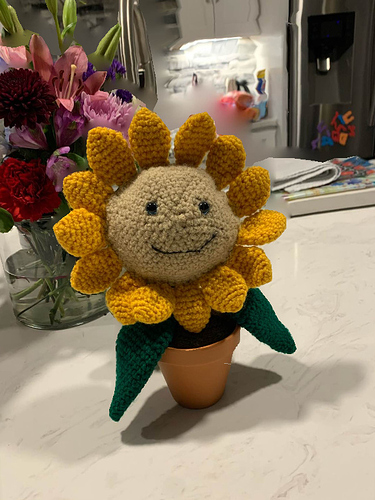In a novel I was reading, it was saying that “flower boy” meant “playboy”.
I didn’t know it could also mean that, but I couldn’t find any source about that.
Anyone?
The history of flower boys I could find was pretty interesting. Who knew it had different meanings before and today!
http://beyondhallyu.com/k-pop/just-pretty-face-long-little-known-history-korean-flower-boys/
- before, “flower boy” meant:
1) The elite hwarang (Shilla from 57 BC - 935 AD)
Back then, a flower boy was part of the cultural and military elite called hwarang.
The characters literally mean ‘flower boy’ (花郞: 花 Hua in Chinese = flower and 郞 lang in Chinese = gentleman).
Trained from a young age and well-versed in poetry and in the art of war, these flower boys were like their kingdom’s heroes whose mission was to protect Shilla from Koguryo kingdom and even sacrificing themselves during battles.
[details=“2) Those “whose lifestyles were considered too decadent” (after Silla unified Korea)”]
“A prejudice rooted in the hwarang’s use of make-up to enhance their features.”
“Growing up extremely isolated with little to no exposure to women other than their family, it is not strange to imagine that homosexual relations developed among the ranks of these young men. Thus, the term was applied to those men who displayed behaviour that was considered ‘feminine’, including the use of make-up and displays of intimate affection toward other men.”
With this, people began to forget about the original meaning and existence of “hwarang” as heroes or idols. All people, except the yangban, educated nobles who had access to the Samguk Yusa, a book in which the hwarang’s life was notably described.
[/details]
3) Symbol of resistance (Japan colonisation 1910-1945)
The original meaning 1) came back with the Japanese colonisation (1910-1945).
- now, “flower boy” is:
4) A kkotminam 꽃미남, a delicate, slightly feminine-looking boy.
Literally “a man with the beauty of a flower”.
The source refers to the character’s name Go Mi Nam with Go Mi Nyeo (nyeo 녀 meaning ‘girl’) as the female equivalent in the Kdrama You’re Beautiful. I didn’t even notice that!
From 1) to 4), the source doesn’t really know why “flower boy” has this definition now.
Maybe, because old books enhanced their beauty and not their military prowess.
Or maybe, because Japanese feminisation of young men influenced Korea.
“(In Japan) before the 1950s no man set foot in the kitchen except as a professional chef. From 1950, however, men who cooked at home for their families crept into Japanese gastronomic novels, and in 1980 a gourmet boom took place with a growth in the number of men making their own bentou, or lunch boxes. This can be seen as a ‘feminisation’ of young men ( danshi translates as ‘boy’), also because danshi gohan (cooking for men) contrasted wildly with otoko ryori (lit. Men’s cooking), the latter of which was considered more adventurous. This ‘adventurousness’ was considered a typical men’s prerogative, but with the rising popularity of danshi gohan among men, the adventurous cooking made way for healthy, cheap, and carefully prepared meals.”
“Another factor is the boys presented in Japanese comics targeted at girls ( shoujo ). In these comics young men are often portrayed as large-eyed, fair-skinned and impeccably stylish. They are generally considerate and sweet regarding the heroine, acting as their best friend and confidant, eventually developing into a love interest. These men, known as bishounen , can also be cold and cruel, in which case it is a major plot point for the heroine to win him over.”
Bishounen on Wikipedia
Bishōnen (美少年, also transliterated ![]() bishounen (help·info)) is a Japanese term literally meaning “beautiful youth (boy)” and describes an aesthetic that can be found in disparate areas in East Asia: a young man of androgynous beauty. This word originated from the Tang dynasty poem Eight Immortals of the Wine Cup by Du Fu.[1] It has always shown the strongest manifestation in Japanese pop culture, gaining in popularity due to the androgynous glam rock bands of the 1970s,[2] but it has roots in ancient Japanese literature, the homosocial and homoerotic ideals of the medieval Chinese imperial court and intellectuals, and Indian aesthetic concepts carried over from Hinduism, imported with Buddhism to China.[3] Today, bishōnen are very popular among girls and women in Japan.[3] Reasons for this social phenomenon may include the unique male and female social relationships found within the genre. Some have theorized that bishōnen provide a non-traditional outlet for gender relations. Moreover, it breaks down stereotypes surrounding feminine male characters. These are often depicted with very strong martial arts abilities, sports talent, high intelligence, dandy fashion, or comedic flair, traits that are usually assigned to the hero/protagonist.[4]
bishounen (help·info)) is a Japanese term literally meaning “beautiful youth (boy)” and describes an aesthetic that can be found in disparate areas in East Asia: a young man of androgynous beauty. This word originated from the Tang dynasty poem Eight Immortals of the Wine Cup by Du Fu.[1] It has always shown the strongest manifestation in Japanese pop culture, gaining in popularity due to the androgynous glam rock bands of the 1970s,[2] but it has roots in ancient Japanese literature, the homosocial and homoerotic ideals of the medieval Chinese imperial court and intellectuals, and Indian aesthetic concepts carried over from Hinduism, imported with Buddhism to China.[3] Today, bishōnen are very popular among girls and women in Japan.[3] Reasons for this social phenomenon may include the unique male and female social relationships found within the genre. Some have theorized that bishōnen provide a non-traditional outlet for gender relations. Moreover, it breaks down stereotypes surrounding feminine male characters. These are often depicted with very strong martial arts abilities, sports talent, high intelligence, dandy fashion, or comedic flair, traits that are usually assigned to the hero/protagonist.[4]
Somewhere else, I read that flower boy in Spanish was also an insult. [1][2]
Any idea?
